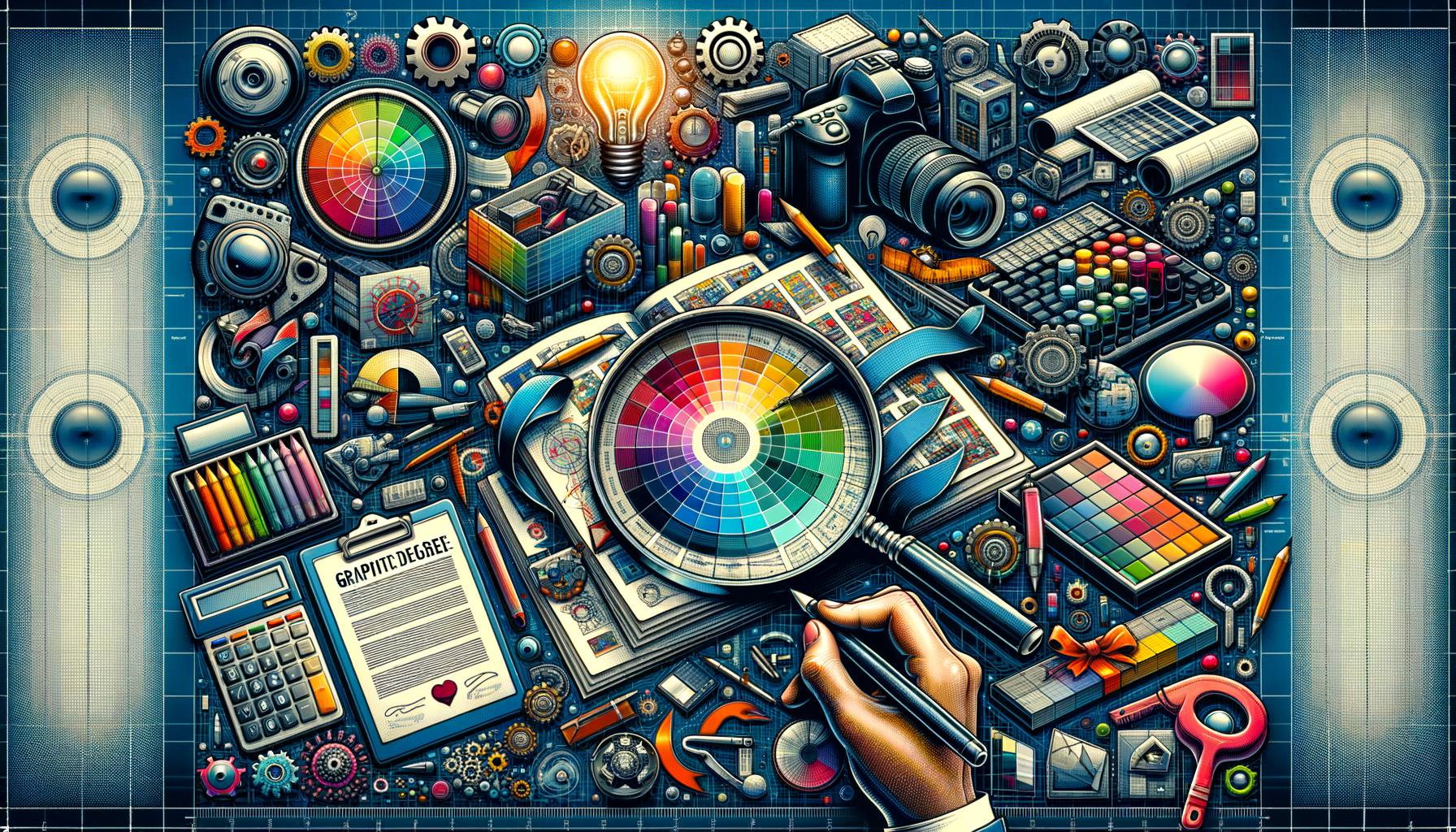Exploring the World of Graphic Design Degrees: Creativity Meets Career
Graphic design is a great way to turn creativity into a practical skill. From making logos to designing social posts. Whether you like to draw, edit, or just try new tools, graphic design is a fun way to explore your creative side and build useful skills.

Understanding the Graphic Design Degree
In today’s visually-driven world, a graphic design degree holds significant value. This academic path equips students with the skills needed to transform creative ideas into visual content that communicates effectively. A graphic design degree covers a wide array of topics including typography, color theory, and digital tools, all crucial in crafting compelling visual narratives. Students learn to use industry-standard software, which is essential for creating digital artwork, logos, and marketing materials. The degree also emphasizes the importance of understanding client needs and the target audience, which are critical skills in the professional field.
Graphic design degrees typically offer a blend of theoretical knowledge and practical application. Courses often include hands-on projects that simulate real-world scenarios, allowing students to build a portfolio that showcases their skills. This portfolio is a key component in securing employment post-graduation, as it provides tangible evidence of a designer’s capabilities.
The Curriculum: What to Expect
The curriculum for a graphic design degree is diverse and comprehensive. It begins with foundational courses in art and design principles, which lay the groundwork for more advanced studies. Students can expect to delve into courses such as:
- Typography: Understanding the art of arranging type to make written language legible, readable, and appealing.
- Color Theory: Learning how colors interact, the psychological effects of color, and how to use color effectively in design.
- Digital Illustration: Using digital tools to create illustrations and graphics.
- Web Design: Creating user-friendly and aesthetically pleasing websites.
- Branding: Developing a cohesive identity for companies or products.
Advanced courses often focus on specialized skills such as motion graphics or 3D design, allowing students to tailor their education to their interests and career goals. The curriculum is designed to foster creativity while ensuring students are well-versed in the technical aspects of design.
Career Opportunities with a Graphic Design Degree
A graphic design degree opens doors to numerous career paths. Graduates can find opportunities in various industries, from advertising and marketing to media and entertainment. Some potential job roles include:
- Graphic Designer: Creating visual content for print and digital media.
- Art Director: Overseeing the visual aspects of advertising campaigns, publications, and product packaging.
- Web Designer: Designing and maintaining websites.
- Illustrator: Producing original artwork for books, magazines, and other media.
- Brand Identity Designer: Developing the visual elements of a brand, such as logos and style guides.
The demand for skilled graphic designers continues to grow as businesses increasingly rely on digital marketing and online presence. This trend ensures that a graphic design degree remains a valuable asset for those entering the workforce.
Comparing Graphic Design Degrees: Online vs. Traditional
When pursuing a graphic design degree, students have the option of traditional on-campus programs or online courses. Each has its advantages and considerations. Traditional programs offer face-to-face interaction with instructors and peers, providing immediate feedback and a collaborative environment. These programs often have access to physical resources like studios and equipment, which can be beneficial for hands-on learning.
Online programs, on the other hand, offer flexibility and convenience. They allow students to balance their studies with other commitments and often provide access to a wide range of digital resources. Online programs are typically more affordable and can be a great option for those who prefer self-paced learning. However, they require a high degree of self-discipline and motivation.
Ultimately, the choice between online and traditional programs depends on personal preferences, learning styles, and career goals. Both pathways can lead to a successful career in graphic design, provided the program is accredited and offers a comprehensive curriculum.
Conclusion: The Value of a Graphic Design Degree
Pursuing a graphic design degree is a rewarding journey for those passionate about art and technology. It combines creativity with practical skills, preparing graduates for a dynamic and evolving industry. Whether students choose a traditional or online program, the key is to engage fully with the learning process and continuously build a diverse portfolio. As the demand for visually engaging content grows, a graphic design degree remains a valuable investment in a creative and fulfilling career. For aspiring designers, this degree not only provides technical expertise but also nurtures the creative spirit essential for innovation in the field.